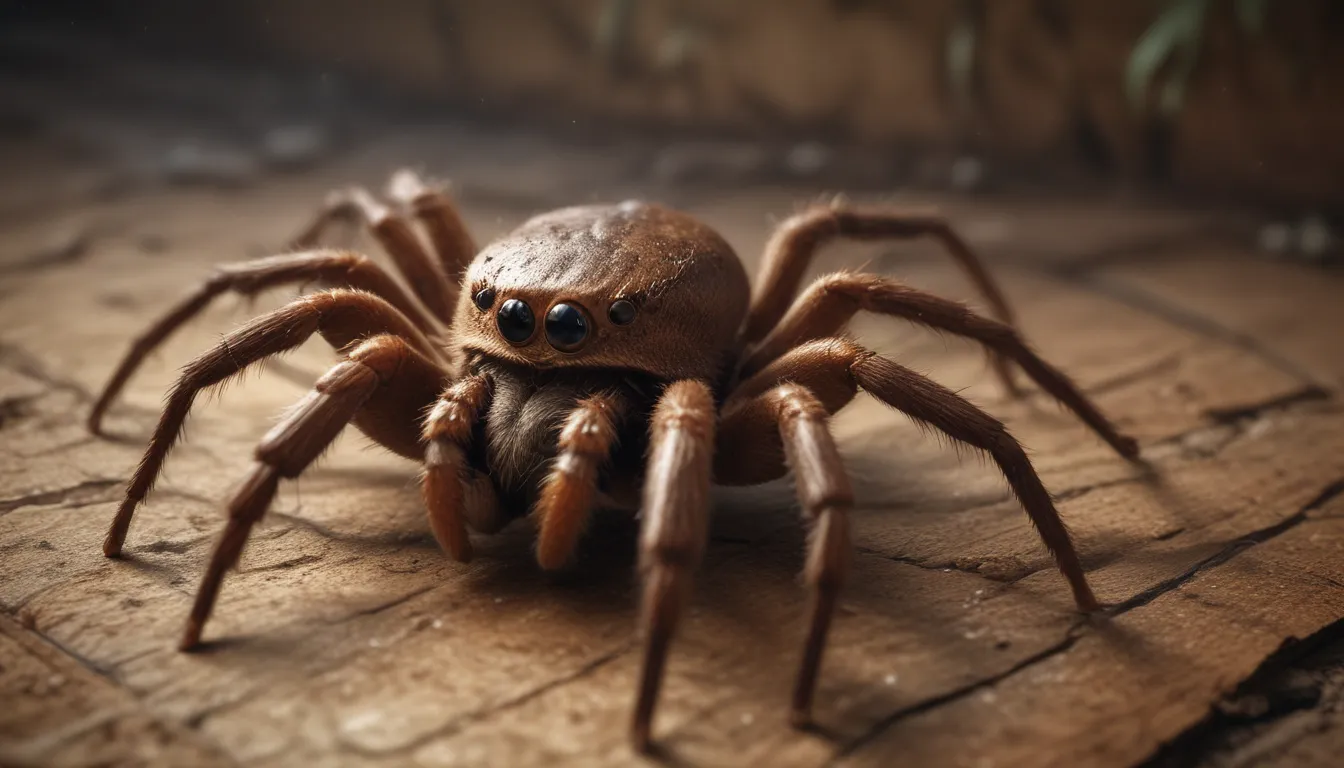The pictures we use in our articles might not show exactly what the words say. We choose these pictures to make you interested in reading more. The pictures work together with the words but don’t take their place. The words still tell you the important facts.
Shield-backed trapdoor spiders are captivating arachnids that have piqued the interest of scientists and nature enthusiasts alike. Belonging to the family Idiopidae, these spiders are predominantly found in Australia and parts of Asia. Their unique physical characteristics and behaviors set them apart from other spider species, making them truly remarkable creatures. Let's embark on a journey to discover 20 fascinating facts about shield-backed trapdoor spiders, shedding light on their camouflage abilities, hunting strategies, and intriguing lifestyle.
Understanding Shield-backed Trapdoor Spiders
-
Master of Disguise: The shield-backed trapdoor spider excels at camouflage, blending seamlessly with its environment to elude predators.
-
Defensive Tactics: When threatened, these spiders raise their abdomens, displaying shield-like markings to intimidate predators and protect themselves.
Survival Strategies of Shield-backed Trapdoor Spiders
-
Silk Production Skills: Shield-backed trapdoor spiders are adept silk producers, using their strong silk to construct intricate burrows with trapdoor lids for shelter and hunting.
-
Patient Hunters: These spiders showcase patience in their hunting techniques, waiting in their burrows to ambush unsuspecting prey with lightning-fast speed.
-
Ambush Predators: With hinged trapdoors covered in debris, shield-backed trapdoor spiders surprise unsuspecting prey with quick strikes, helping regulate insect populations.
Insights into the Lifestyle of Shield-backed Trapdoor Spiders
-
Voracious Eaters: Shield-backed trapdoor spiders have a hearty appetite, swiftly consuming insects and small creatures to maintain ecosystem balance.
-
Extended Lifespan: Some shield-backed trapdoor spiders can live up to 20 years, showcasing longevity compared to other spider species.
-
Subterranean Dwellers: These spiders spend the majority of their lives underground, utilizing burrows for protection from predators and environmental fluctuations.
-
Habitat Adaptation: Shield-backed trapdoor spiders thrive in various habitats, from forests to deserts, showcasing their adaptability to different environments.
Behavioral Characteristics of Shield-backed Trapdoor Spiders
-
Slow Growth Rate: It takes several years for shield-backed trapdoor spiders to reach maturity, undergoing multiple molting cycles during their growth period.
-
Female Dominance: In spider colonies, females reign supreme, with larger sizes and more control over territory and resources.
-
Limited Mobility: These spiders have restricted movement, staying close to their burrows to capture prey efficiently and minimize exploration.
Mating and Reproductive Behaviors of Shield-backed Trapdoor Spiders
-
Intricate Courtship: Mating rituals involve elaborate displays by males to attract females, often including vibrating legs and abdomen in complex patterns.
-
Burrow Architecture: The burrows of shield-backed trapdoor spiders are architecturally complex, featuring silk-lined tunnels and door-like trapdoors for access and protection.
-
Slow Reproduction Cycle: Females invest time and effort in caring for their young, laying a limited number of eggs and ensuring their offspring are prepared to venture out on their own.
Unique Features of Shield-backed Trapdoor Spiders
-
Distinctive Abdomen: The shield-backed trapdoor spider derives its name from the shield-like pattern on its abdomen, serving as both camouflage and a warning signal.
-
Sensitivity to Vibrations: These spiders possess extremely sensitive vibration detectors on their legs, enabling them to detect subtle movements near their burrows.
-
Nocturnal Predators: Shield-backed trapdoor spiders are primarily nocturnal, enhancing their hunting efficiency and avoiding extreme temperatures during the day.
Survival and Conservation of Shield-backed Trapdoor Spiders
-
Dispersal Methods: Shield-backed trapdoor spiders employ various dispersal methods, including ballooning and walking, to seek out suitable habitats.
-
Ecological Role: These spiders play a vital role in ecosystem balance by controlling insect and invertebrate populations, contributing to habitat health.
Exploring the Enigmatic World of Shield-backed Trapdoor Spiders
Shield-backed trapdoor spiders continue to intrigue researchers and enthusiasts with their exceptional adaptations and behaviors. From their camouflage prowess to intricate mating rituals, these spiders offer a glimpse into the complexity of arachnid life. While much remains to be discovered about these remarkable creatures, ongoing research and conservation efforts are essential to unraveling their mysteries and ensuring their preservation.
Frequently Asked Questions
-
Origin of Name: Shield-backed trapdoor spiders are named for the shield-like structure on their abdomen, serving as a defensive feature.
-
Venomous Nature: These spiders are venomous, primarily using their venom for subduing prey without posing a significant threat to humans.
-
Burrow Construction: Shield-backed trapdoor spiders utilize strong jaws and silk to excavate burrows, lining them with silk and incorporating trapdoors for hunting.
-
Lifespan: While lifespan varies, shield-backed trapdoor spiders typically live for several years, with some species reaching 15 years or more in the wild.
-
Habitat Range: Shield-backed trapdoor spiders are predominantly found in Australia, particularly in arid regions where they thrive.
-
Dietary Preferences: These spiders feed on insects, small invertebrates, and occasionally small vertebrates like lizards and frogs for sustenance.
-
Human Interaction: Shield-backed trapdoor spiders are not aggressive towards humans, preferring to retreat to their burrows when threatened.
-
Pet Keeping: While some keep shield-backed trapdoor spiders as pets, it is crucial to ensure proper care and legality of keeping them as pets.
-
Reproductive Process: Mating involves male spiders creating modified burrows near females, initiating courtship displays, and transferring sperm for reproduction.
-
Conservation Status: While some species face threats, shield-backed trapdoor spiders are not currently classified as endangered, underscoring the need for ongoing monitoring and habitat protection.
Embrace the intrigue and wonder of shield-backed trapdoor spiders as we explore their captivating world filled with unique adaptations, behaviors, and mysteries waiting to be unveiled.






